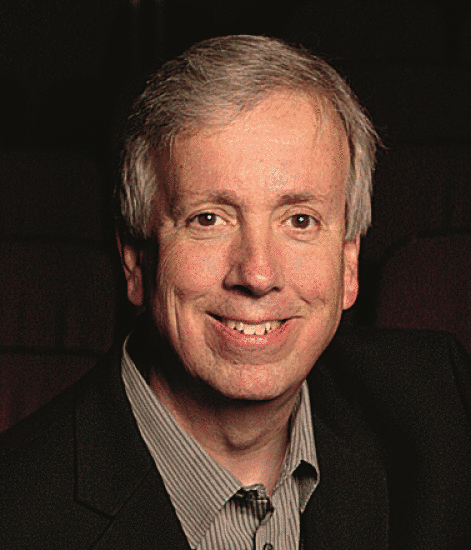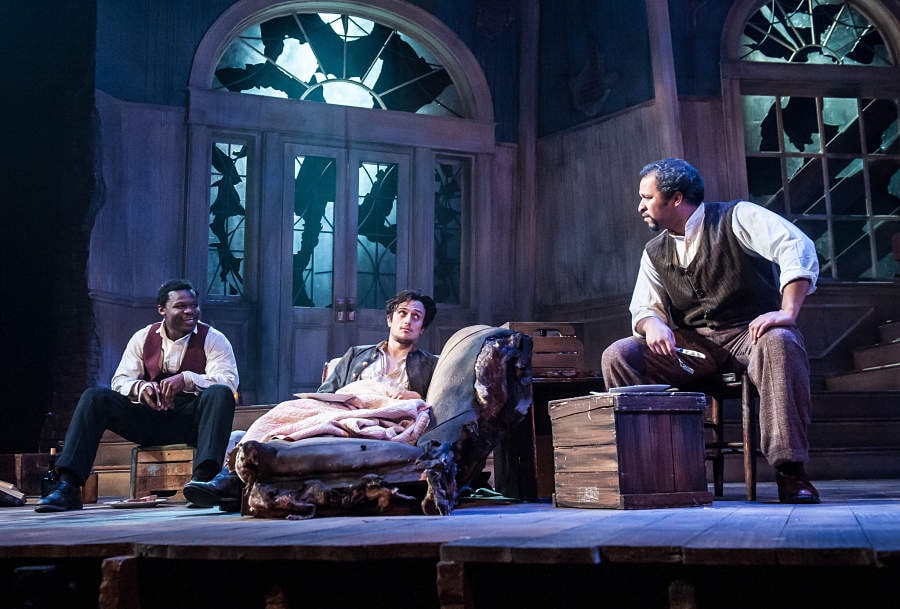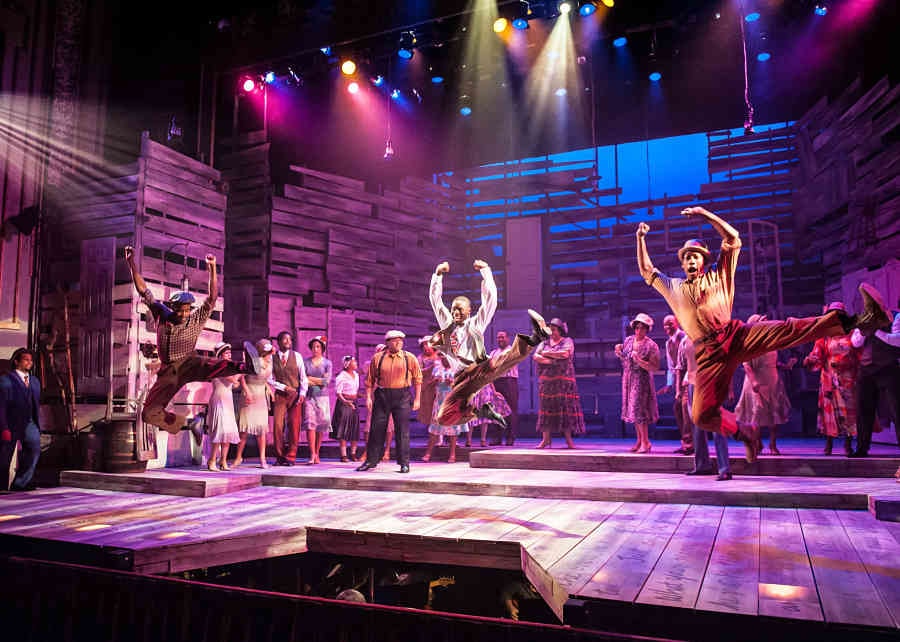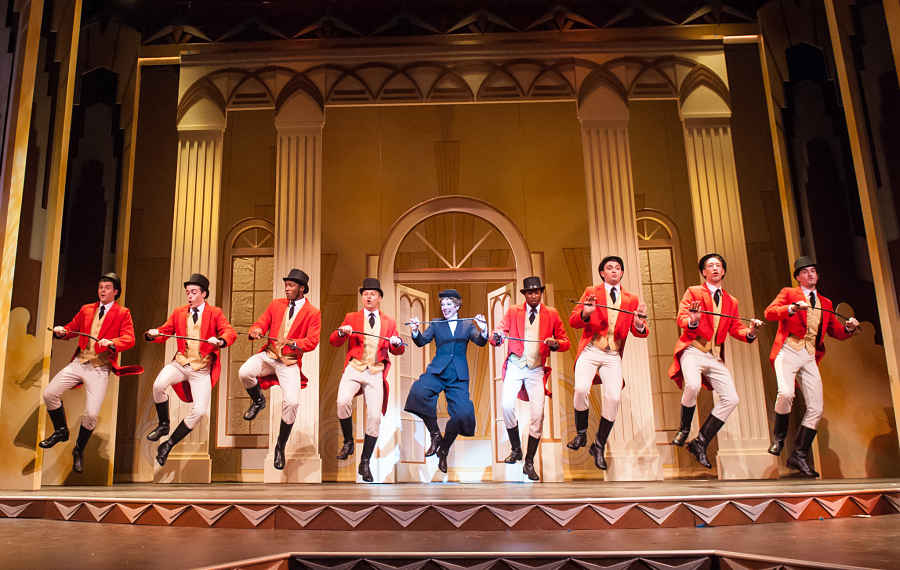RICHMOND, VA.: A merger of two Virginia theatres, Virginia Repertory Theatre programs seasons at three spaces in downtown Richmond, each with its own unique character and backstory: the 600-seat November Theatre, a former vaudeville house that dates back to 1911; the 150-seat Hanover Tavern, which dates back to pre-Revolutionary War days and whose famous residents included Patrick Henry; and the 207-seat Willow Lawn, a children’s theatre in a shopping mall.
We spoke to artistic director Bruce Miller, a founder of one of the companies that became Virginia Rep, about the theatre’s sense of mission, its engaged audience and how he picks the work he puts on his stage.
Who founded Virginia Rep, when, and why?
Virginia Repertory Theatre was created in July 2012 by the merger of Barksdale Theatre and Theatre IV. Barksdale was founded in August 1953 by Tom Carlin, Stu Falconer, Pete and Perky Kilgore, Muriel McAuley and Pat Sharp. The six were young friends and theatre artists living in NYC. Inspired by Margo Jones and her book, Theatre in the Round, they decided they wanted to be part of “the great cogwheel turning toward the decentralization of American theatre” (a quote from their first press release). They moved en masse to the Richmond, Va., home of Stu Falconer’s mother, determined to find a property in which they could start their own “theater in the round.” Stu left his job as a stage manager of the legendary Summer and Smoke production at Circle in the Square (start of the Off-Broadway movement) to become a founder of Barksdale.
Once in Richmond, the six spent a year saving money and finding historic Hanover Tavern, the ancestral home of Patrick Henry. They purchased the tumbledown Tavern for $25,000, returned glass to the windows and plumbing to the bathrooms, lived commune-like in the upstairs, built a theatre in the English basement, and began serving food in the ground floor rooms that lay between. Without knowing it, they created the first dinner theatre in the nation. They also produced Central Virginia’s first professional productions of the work of Arthur Miller, Tennessee Williams, Eugene O’Neill, George Bernard Shaw, Edward Albee, and Lorraine Hansberry. In defiance of 1950s laws, they were the first performing arts company in Virginia, post-Reconstruction, to open their doors to integrated artists and audiences. By 1958, all of the founders but Pete Kilgore and Muriel McAuley had gone their separate ways. Pete, his second wife Nancy, and Muriel ran the theatre, brilliantly, until their retirement in 1993.

Theatre IV was founded in May 1975 the first professional children’s theatre in Virginia by myself and Phil Whiteway; we continue as artistic and managing directors of Virginia Rep, respectively. We both performed, and I directed, at Barksdale during our college years. Over time, Theatre IV grew to become the second largest touring children’s theatre in the nation, and still tours today throughout 33 states. Theatre IV and Barksdale began working in strategic collaboration in 2001, and merged in 2012.
What sets your theatre apart from others in the region?
Community engagement. While maintaining the highest artistic standards, neither Barksdale nor Theatre IV have ever been “art for art’s sake” organizations; we’ve always been an “art for the community’s sake” organizations. Theatre IV was named that because we sought national-caliber excellence equally in four areas: the arts, education, children’s health and community leadership. These four focus areas continue to be a key component of our mission today.
Who is your audience?
Our audience is comprised of a very diverse group of children and adults of all ages and economic means throughout Central Virginia. Since 1975, no one has been turned away because of inability to pay. Through a variety of initiatives, we reach out to a broad cross-section of nontraditional theatregoers. We also tour extensively to major performing arts centers throughout Virginia, D. C. and 32 states.

Tell us about your favorite theatre institution other than your own, and why you admire it.
I grew up on Arena Stage, and was a subscriber there for 20 years before I had children. During the Zelda years, which were my formative years, I greatly admired their commitment to diverse programming including world classics, great American plays and new work. I also greatly admired their commitment to D. C. artists. While our LORT theatre in Richmond was booking almost everyone in from NYC, Arena was celebrating, building and employing their outstanding company of local artists, creating the Washington, D. C. theatre community that continues to flourish today.
How do you pick the plays you put on your stage?
Because of our vaulting ambition to be a regional theatre of national standing, we produce more than we should. For 40 years we’ve been purposefully growth-oriented. In our signature season in our historic November Theatre, we produce two major musicals every year, refusing to cede to nationally touring operations that large percentage of the Richmond audience that defines theatre as the “big Broadway musical.” Our recent production of Mame starring Richmond native and Virginia Rep alum Emily Skinner was a huge hit.
For our smaller but more discerning audience that values theatre as an art form more than as a night on the town, we produce a wide variety of world classics, great American plays and new work. There’s that Arena influence. Our current productions of The Whipping Man, Caroline, or Change, a world premiere of Treasure Island and You’re a Good Man, Charlie Brown are doing us proud in our four home facilities.
We try to pick a mix of plays that advance the art form, challenge our artists and audiences in positive ways, can be done well within the limits of our resources, and bring fresh joy and insight to our diverse community.
What’s your annual budget, and how many artists do you employ each season
Our annual budget is $5 million, and we employ 240 artists annually.
What show are your working on now? Anything else in your season you’re especially looking forward to?
Personally, I’m currently working on a workshop of a new play, End of War, by Richmond novelist and playwright David L. Robbins. I’m especially looking forward to our summer production of South Pacific, produced in partnership with the Paul and Phyllis Galanti Education Center/Virginia War Memorial. We are inviting all WWII veterans in Central Virginia to accept comp tickets and attend as our honored guests. We’re expecting a large contingent of veterans at every performance all summer long.

Strangest or funniest thing you’ve ever seen (or put) on your stage?
About 30 years ago, when we were using a reel-to-reel tape deck to play the recorded tracks for some of our children’s theatre musicals, we were doing a performance of Small Wonders, an original musical based on the creative writing of Virginia students. During one show the power grid went a little berserk, and we began experiencing brown-outs. Our tape deck couldn’t handle the fluctuating power, so it began to play at variable speeds over which we had no control. As the actors were singing a song titled “Feelings and Memories,” the recorded accompaniment suddenly began to speed up, going higher in pitch as it went faster and faster, then just as suddenly began to slow down, dropping into basso profundo notes heard only by pachyderms. Watching the cast try to ride this roller coaster as a team without cracking up had me rolling in the aisles.
What are you doing when you’re not doing theatre?
Spending time with my wife and adult children, reading, teaching adult Sunday School, walking, traveling when I can afford it.
What does theatre—not just your theatre, but the American or world theatre—look like in, say, 20 years?
Lots of new plays from Chinese and Arabic cultures. A rediscovery of the brilliance of Sondheim. A return to world classics as a staple of regional theatres. More second, third and fourth productions of worthy new scripts that don’t make it to Broadway, often combined into endlessly rolling world premieres.


